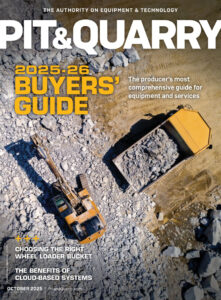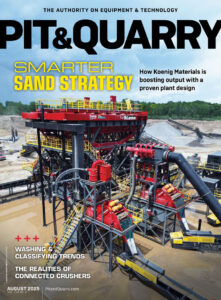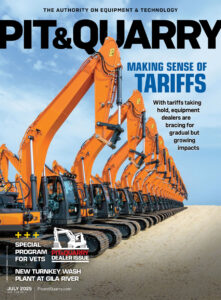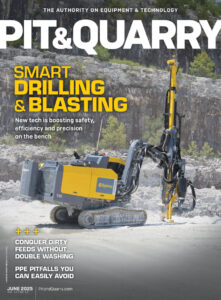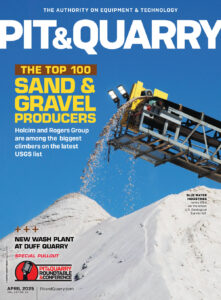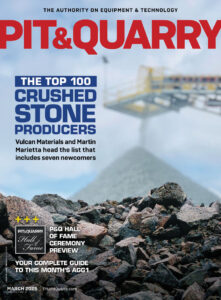Excessive preload can generate a large amount of heat and cause damage similar in appearance to inadequate lubrication. Often, the two causes may be confused. So it is important to check the bearing thoroughly to determine the root problem.
A lubricant that’s suitable for normal operation may be unsuitable for a heavily preloaded bearing, as it may not have the film strength to carry the higher loads.
Excessive end play
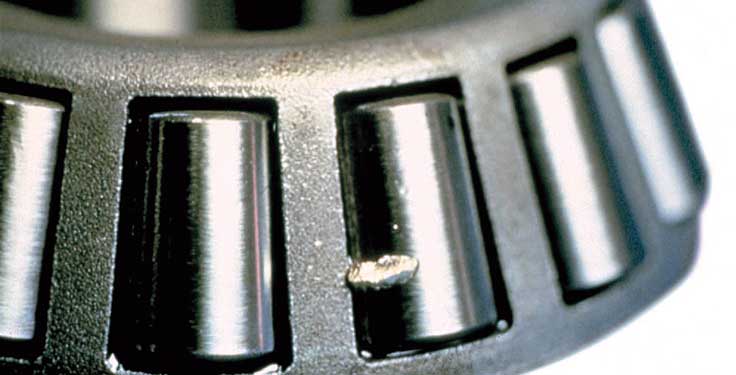
Excessive end play results in a very small load zone and excessive looseness between the rollers and races outside the load zone. This causes the rollers to unseat, leading to skidding and skewing as the rollers move into and out of the load zone. This movement creates scalloping in the cup race and can also cause cage wear.
Misalignment
Misalignment will shorten bearing life depending on the degree of misalignment. To achieve longer life, the seats and shoulders supporting the bearing must be within the specified limits set by the manufacturer. If the misalignment exceeds those limits, the load on the bearing won’t be distributed along the rolling elements and races as intended.
Typical causes of misalignment include:
• Inaccurate machining or wear of housings or shafts.
• Deflection from high loads.
• Out-of-square backing shoulders on shafts or housings.
Handling and installation damage
Care must be taken when handling and assembling bearings so the rolling elements, race surfaces and edges aren’t damaged. Deep gouges in the race surface or battered and distorted rolling elements will make metal rise around damaged areas. High stresses will occur as the rolling elements go over these surfaces, creating premature, localized spalling.
Damaged bearing cages or retainers
Careless handling and using improper tools during installation may cause cage or retainer damage. Cages and retainers are usually made of mild steel, bronze or brass and can be easily damaged. In some applications, environmental and operating conditions can cause fractured cages or retainers. If this occurs, contact a service engineer.
High spots and fitting practices
Careless handling or damage caused when driving outer races out of housings or wheel hubs can create burrs or high spots in the outer race seats.
If a tool gouges the housing seat surface, it will leave raised areas around the gouge. If these high spots are not scraped or ground down before reinstalling the outer race, they will transfer through the outer race and cause corresponding high spots in the outer race’s inside diameter. Stresses increase when the rolling elements contact this high area, which can shorten service life.
Improper fit in housings or shafts
Always follow the manufacturer’s recommended bearing fit to ensure bearings perform properly. Generally, the bearing race – where the rotating load exists – is applied with a press or tight fit. An example is a wheel hub, where the outer race should be applied with a press fit.
The races on a stationary axle would normally be applied with a light or loose fit. Where the shaft rotates, the inner race should normally be applied with a press fit, and the outer race may be applied with a split fit or even a loose fit.
Brinell and impact damage
Brinelling from improper bearing assembly and disassembly happens when a force is applied against the unmounted race. When mounting a bearing on a shaft with a tight fit, pushing the outer race will exert an excessive thrust load and bring the rolling elements into sharp contact with the race, causing brinelling.
Extremely heavy impact loads can also result in brinelling of the bearing races, or even fracture the races and rolling elements.
False brinelling
False brinelling is fretting wear caused by slight axial rolling-element movements while the bearing is stationary. Vibration can make the rolling element slide back and forth across the race, wearing a groove into it.
Roller bearings also exhibit false brinelling when used in positions that encounter very small reversing angular oscillation – less than one complete rotation of the rolling element.
To distinguish false brinelling from true, examine the depression or wear area. False brinelling will wear away the surface texture, whereas the original texture will remain in the depression of a true brinell.
Burns from electric current
Arcing occurs when an electric current that passes through a bearing is broken at the contact surfaces between the races and rolling elements. Each time the current is broken while passing between the ball or roller and race, it produces a pit on both parts. Eventually, fluting develops.
Causes of arcing include static electricity from charged belts or processes that use calender rolls, faulty wiring, improper grounding, welding, inadequate or defective insulation, loose rotor windings on an electric motor and short circuits.
More on bearings: P&Q University Lesson 12- Maintenance & Optimization
Information for this article provided by The Timken Co.
Article last modified September 16, 2024.



